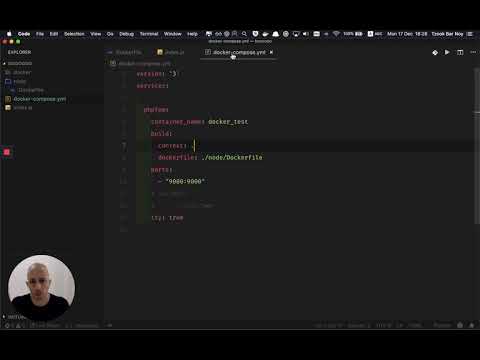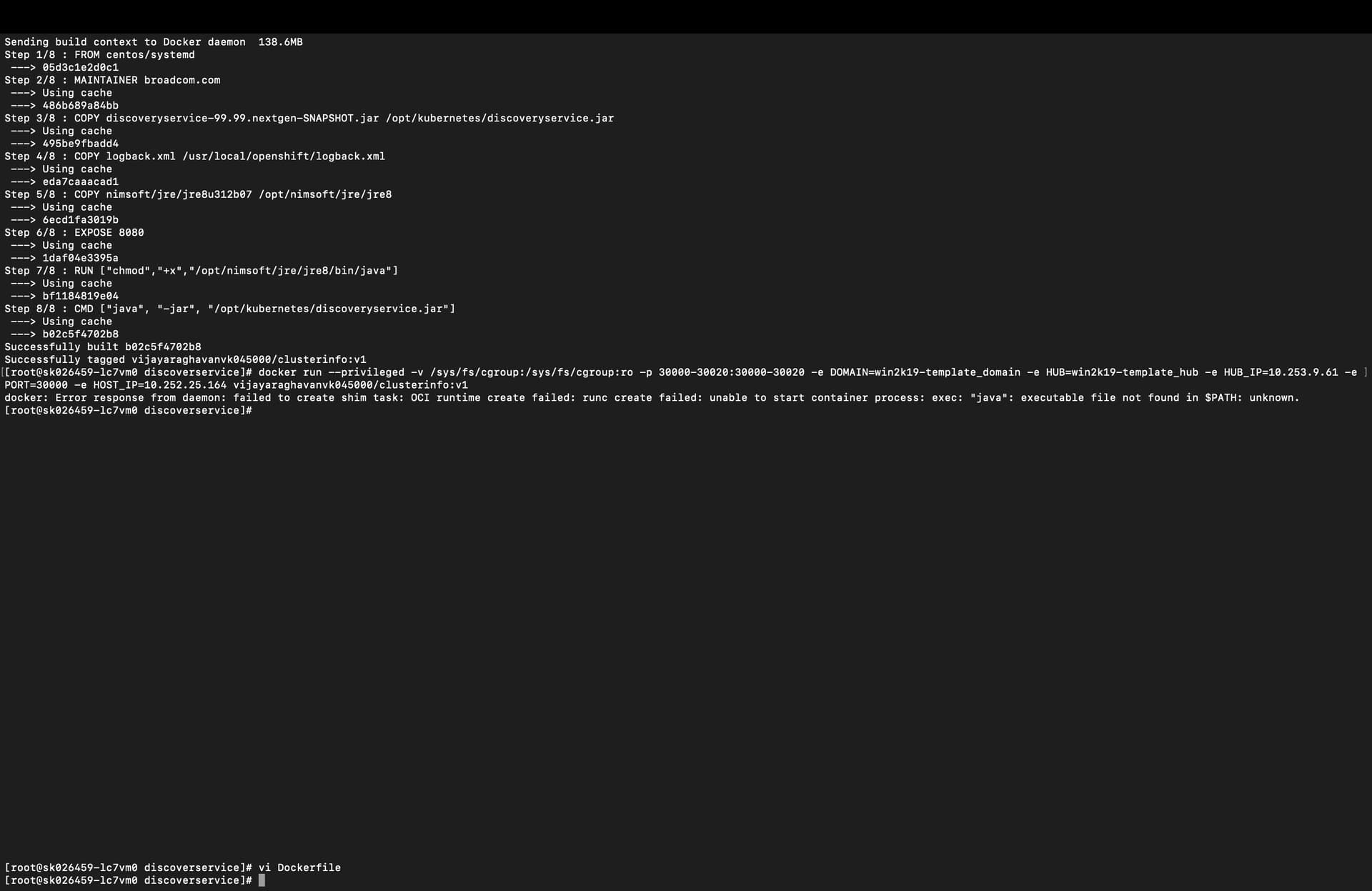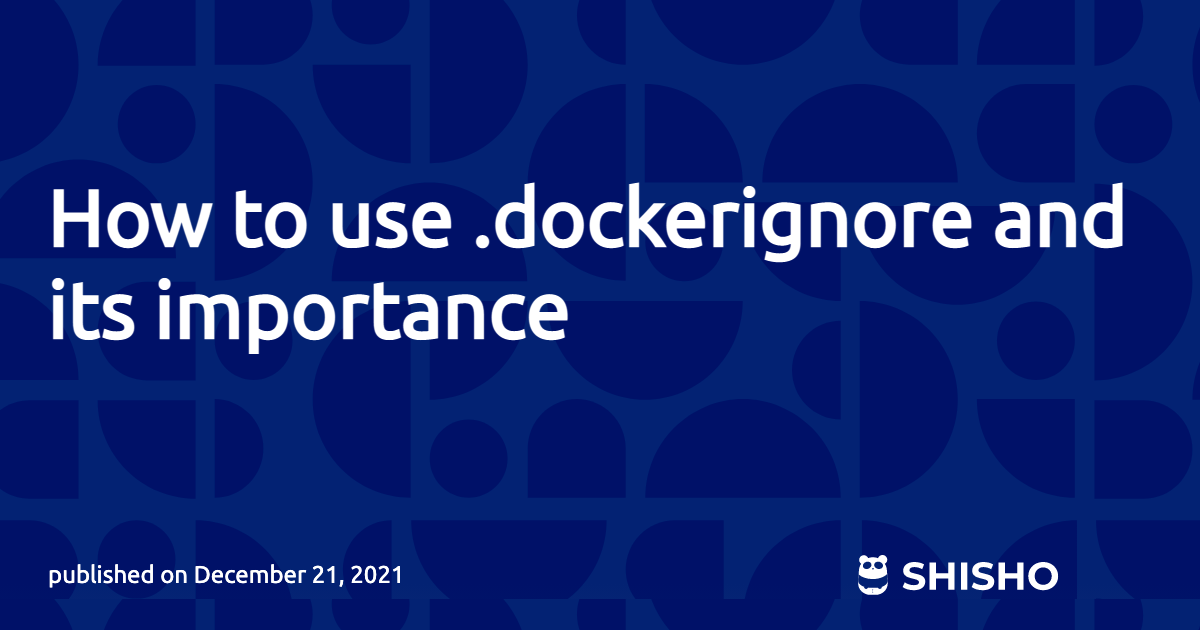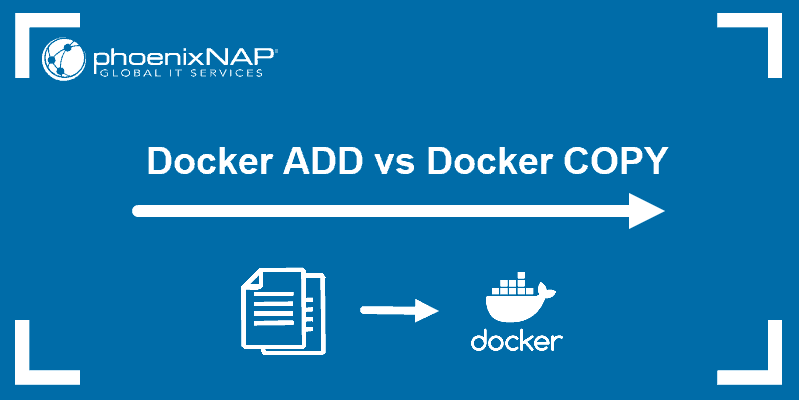File Not Found In Build Context
The Docker build process allows developers to automate the creation and deployment of applications within a containerized environment. However, during the build process, there may be instances where the error “File Not Found in Build Context” occurs. In this article, we will delve into the common causes of this error and discuss ways to resolve it. We will also provide troubleshooting tips to help you overcome any issues you may encounter during the Docker build process.
1. Definition and Context of the Error
The “File Not Found in Build Context” error typically occurs when a file or directory referenced in the Dockerfile cannot be located within the build context. The build context refers to the directory containing the Dockerfile and any other files referenced in the Dockerfile. When Docker builds an image, it automatically transfers the build context to the Docker daemon. If a file or directory specified in the Dockerfile is not present within the build context, the error occurs.
2. Invalid File or Directory References
One common cause of the “File Not Found in Build Context” error is an invalid reference to a file or directory in the Dockerfile. Ensure that the file or directory path specified in the Dockerfile accurately reflects its location within the build context. Double-check any relative path references to ensure they are correct.
3. Issues with .dockerignore File
The .dockerignore file allows you to specify which files and directories should be excluded from the build context. If the “File Not Found in Build Context” error occurs, check your .dockerignore file to ensure that it is not excluding any essential files or directories. Remove any unnecessary entries or adjust the file patterns to include the required files.
4. Inconsistent Dockerfile and Build Context
Another cause of the error is when there is a mismatch between the Dockerfile and the build context. Ensure that the Dockerfile and the referenced files or directories are present within the same build context directory. If the files are located in a different directory, either move them to the build context or adjust the Dockerfile to reflect the correct path.
5. Resolving Errors in Volumes and Mounts
If you encounter the error when using volumes or mounts, ensure that the mount point or volume path specified in the Dockerfile is correct and exists within the build context. Additionally, check if the required files are present in the volume or mount location. If not, you may need to adjust the Dockerfile to copy the required files into the volume or mount.
6. File Permissions and Ownership
File permission issues can also cause the “File Not Found in Build Context” error. Ensure that the files and directories within the build context have appropriate permissions for Docker to access them. If necessary, adjust the permissions using chmod or chown commands to give Docker the required access.
7. Troubleshooting and Debugging the Build Process
To troubleshoot and debug the build process, you can utilize Docker’s build-time environment variables and their respective values. These variables can provide useful insights into the build process, allowing you to identify any issues or incorrect references. Additionally, closely inspect the build logs for any specific error messages related to the “File Not Found in Build Context” error. These logs can often pinpoint the exact cause of the error, guiding you towards a solution.
Frequently Asked Questions (FAQs):
Q1. What is the “File Not Found in Build Context” error in Docker?
A1. The “File Not Found in Build Context” error occurs when a file or directory referenced in the Dockerfile cannot be located within the build context directory.
Q2. How can I resolve the “File Not Found in Build Context” error?
A2. To resolve the error, ensure that the referenced files or directories exist within the build context directory. Check the Dockerfile for any incorrect path references or missing files. Verify the .dockerignore file and make sure it is not excluding necessary files. Set appropriate file permissions and ownership if necessary.
Q3. What tools can I use to troubleshoot the Docker build process?
A3. Docker’s build-time environment variables and build logs are valuable tools for troubleshooting. Environment variables provide insights into the build process, and build logs may contain specific error messages related to the “File Not Found in Build Context” error.
Q4. Can incorrect volume or mount paths cause the “File Not Found in Build Context” error?
A4. Yes, if the specified volume or mount path is incorrect or does not exist within the build context, the error may occur. Ensure that the volumes or mounts are correctly specified in the Dockerfile and that the required files exist in the designated locations.
In conclusion, the “File Not Found in Build Context” error in Docker can have various causes, including invalid file references, issues with the .dockerignore file, inconsistencies between the Dockerfile and build context, errors in volumes or mounts, and file permission issues. By understanding these common causes and following the troubleshooting and debugging techniques described in this article, you can effectively resolve this error and ensure a smooth Docker build process.
Docker Build Context Trick
Keywords searched by users: file not found in build context ERROR (internal) load build context, Docker context, Build context docker, COPY failed: stat app build file does not exist, COPY failed: Forbidden path outside the build context, Dockerfile copy file, Docker copy file from another directory, Dockerfile list files in directory during build
Categories: Top 59 File Not Found In Build Context
See more here: nhanvietluanvan.com
Error (Internal) Load Build Context
Introduction (100 words):
In software development, load build context is a crucial process that allows developers to compile and execute code efficiently. However, encountering an ERROR (internal) load build context can be frustrating and time-consuming. This article aims to provide a detailed understanding of this particular error, covering its causes, impact, and potential solutions. We will also address commonly asked questions about the ERROR (internal) load build context to help developers overcome this obstacle seamlessly.
Understanding the ERROR (Internal) Load Build Context (600 words):
1. Definition and Function:
The ERROR (internal) load build context is an issue that arises during the build process of a software project. It occurs when the build context encounters an internal error, hindering the successful compilation and execution of the code. The load build context, on the other hand, refers to the set of dependencies, configuration files, and source code required for the build process. It enables the compiler to resolve references and translate code into machine-readable form.
2. Causes:
Several factors can contribute to an ERROR (internal) load build context, making it a challenging problem to diagnose. The most common causes include:
a) Faulty Dependencies: Incorrect, outdated, or incompatible dependencies can disrupt the load build context, leading to an internal error.
b) Configuration Issues: Misconfigured build tools, improper environment variables, or conflicts in project settings can impact the build context.
c) Defective Source Code: Syntax errors, missing references, or incomplete declarations in the code can trigger internal errors during the load build process.
3. Impact:
The ERROR (internal) load build context can have significant consequences, manifesting as build failures or inconsistent behavior in the software. It can prevent successful compilation, resulting in failed deployments, delayed project timelines, and frustrated developers. Identifying and resolving this error promptly is crucial to maintain the project’s integrity and ensure a seamless development process.
4. Troubleshooting and Solutions:
Resolving an ERROR (internal) load build context requires a systematic approach. Here are some steps to address this issue effectively:
a) Verify Dependencies: Check for outdated or incompatible dependencies. Ensure they are correctly specified and their versions align with project requirements.
b) Review Configuration: Carefully evaluate build settings, environment variables, and project configuration files. Rectify any inconsistencies or conflicts.
c) Debug Source Code: Thoroughly analyze the source code for syntax errors or missing references. Utilize debugging tools and logs to identify the exact location of the internal error.
d) Seek Community Support: Consult forums, developer communities, or online resources to leverage collective expertise and resolve complex ERROR (internal) load build context issues.
e) Rebuild Environment: Rebuilding the development environment from scratch can sometimes solve persistent internal errors. This may involve reconfiguring build tools, eliminating conflicts, or reinstalling dependencies.
Frequently Asked Questions (FAQs) (250 words):
Q1. How can I determine if an ERROR (internal) load build context is the cause of my build failure?
A. Look for error messages that specifically mention “load build context.” These messages usually provide details about the internal error and can help identify its cause.
Q2. Is there any specific tool or technique to pinpoint the exact location of the internal error?
A. Utilizing diagnostic tools provided by your development environment, such as logging frameworks or integrated development environments (IDEs), can greatly assist in locating the source of the internal error.
Q3. I have followed all troubleshooting steps but still cannot fix the ERROR (internal) load build context. What should I do?
A. In such cases, consulting online forums, developer communities, or reaching out to experienced colleagues might provide fresh insights and alternative solutions tailored to your specific situation.
Q4. Are there any best practices to prevent encountering an ERROR (internal) load build context?
A. Regularly updating dependencies, double-checking build configurations, and maintaining clean and error-free source code can significantly reduce the occurrence of this error. Building thorough unit tests and maintaining an organized development process can also help in avoiding unexpected errors.
Conclusion (100 words):
The ERROR (internal) load build context is a hurdle that developers may encounter during the software build process. Understanding its causes, impact, and solutions is crucial for efficient troubleshooting. By meticulously verifying dependencies, reviewing project configurations, and debugging source code, developers can overcome this error effectively. Additionally, leveraging the support of developer communities and striving for best practices in software development can minimize the occurrences of the ERROR (internal) load build context, leading to smoother and faster project delivery.
Docker Context
In the world of software development and deployment, containers have become a popular and efficient way to package applications and their dependencies. Docker, a leading container platform, has revolutionized the way developers build, ship, and run applications. One crucial aspect of working with Docker is the concept of “Docker context.” In this article, we will explore what Docker context is, its importance, and how it can simplify container management.
What is Docker Context?
Docker Context is a new feature introduced in Docker 19.03 that allows developers to manage multiple Docker environments effortlessly. It provides a way to switch between different Docker endpoints seamlessly, such as local Docker engines or remote Docker hosts. Docker Context simplifies the workflow by eliminating the need to manually configure environment variables, certificates, SSH connections, or any other settings needed to access different Docker environments.
Why is Docker Context Important?
Before the introduction of Docker Context, managing different Docker environments and switching between them was often a cumbersome and error-prone process. Developers had to juggle with complex configurations, deal with environment variables, and remember various connection details, making their workflow less efficient. Docker Context addresses these challenges by offering a uniform and user-friendly way to switch between different Docker endpoints, providing a seamless experience for developers.
How Does Docker Context Work?
Docker Context relies on a simple yet powerful concept: each Docker endpoint corresponds to a context. A context contains information required to communicate with a Docker environment, such as the Docker daemon host, certification paths, and other configuration settings. By using the Docker Context CLI, developers can create, manage, and switch between different contexts effortlessly.
Creating and Managing Docker Contexts
Creating a Docker Context is a straightforward process. By using the Docker CLI, you can create a context and specify its name and configuration options. For example, to create a context for a remote Docker host, you can provide the necessary details such as the host address, SSH connection details, and other settings. Docker Context CLI also allows you to list, inspect, and remove existing contexts.
Switching Between Docker Contexts
Switching between Docker Contexts is as easy as issuing a single command. By using the “docker context use” command, developers can switch to the desired context and seamlessly transition to a different Docker endpoint. This allows developers to work on various projects or collaborate with different teams without the hassle of modifying configurations or restarting Docker services. Additionally, developers can set a default context, making it the active context when no specific context is specified.
FAQs
Q: Can Docker Context be used with both local and remote Docker endpoints?
A: Yes, Docker Context is designed to work with both local and remote Docker endpoints. You can create contexts for local Docker engines running on your machine or configure contexts to connect to remote Docker hosts.
Q: Does Docker Context support multiple Docker hosts?
A: Yes, Docker Context allows you to manage multiple Docker hosts. Each host can be associated with a separate context, enabling easy switching between different Docker endpoints.
Q: Are Docker Contexts limited to specific platforms or operating systems?
A: No, Docker Contexts can be used across different platforms and operating systems where Docker is supported. Whether you are working on Linux, macOS, or Windows, Docker Context provides a unified experience for managing containers.
Q: Can Docker Contexts be shared across a team?
A: Docker Contexts are specific to individual developers and their local environment. However, Docker configuration files can be version controlled and shared among team members to ensure consistency and easy replication of environments.
Q: Does Docker Context require any additional setup or configuration?
A: Docker Context requires minimal setup. Once the Docker CLI is installed and the Docker daemon is running, you can start creating and managing Docker Contexts without any additional configuration.
In summary, Docker Context simplifies container management by providing an intuitive way to switch between different Docker environments. By eliminating the need for manual configuration and complex settings, Docker Context enhances developer productivity and streamlines the workflow. Whether you are working on local Docker engines or connecting to remote Docker hosts, Docker Context empowers developers to focus on building and deploying applications rather than managing container settings.
Images related to the topic file not found in build context

Found 25 images related to file not found in build context theme















![How to Fix VirtualBox Kernel Headers Not Found Error [Solved] How To Fix Virtualbox Kernel Headers Not Found Error [Solved]](https://www.debugpoint.com/wp-content/uploads/2022/10/khnf-768x432.jpg)



Article link: file not found in build context.
Learn more about the topic file not found in build context.
- Docker: COPY failed: file not found in build context (Dockerfile)
- COPY failed: file not found in build context or excluded by …
- How to Include Files Outside of Docker’s Build Context
- Dockerfile copy file not found but context is correct, it … – Reddit
- Dockerfile COPY cannot find the file | by Stanley Meng – Medium
- COPY failed: file not found in build context or … – Treehouse
- Docker file – COPY requirements.txt COPY failed: file not found …
- [Solved]-ADD failed: file not found in build context-docker
- Dockerfile reference | Docker Documentation
- Docker build context incorrect (not respecting .dockerignore)